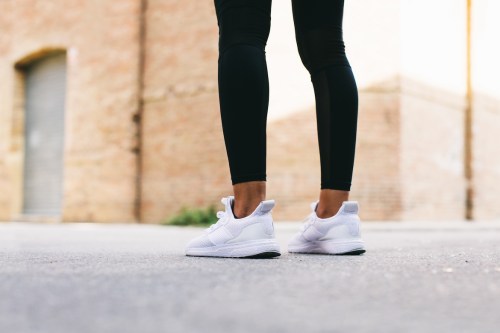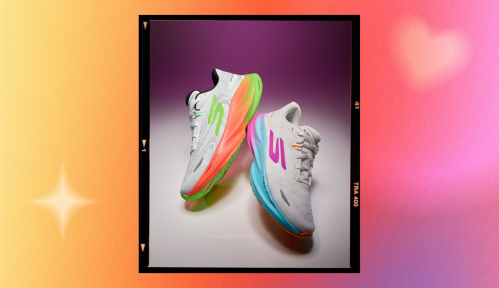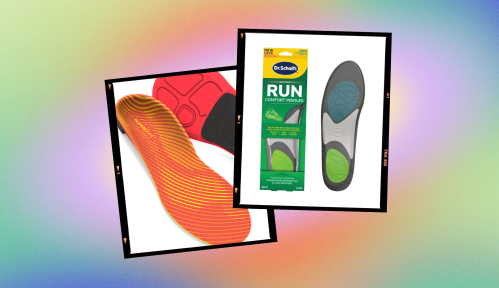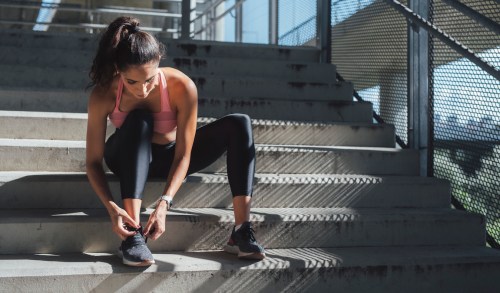Our editors independently select these products. Making a purchase through our links may earn Well+Good a commission
How Often Should You Replace Your Running Shoes? A Podiatrist Weighs In
Wondering "how often should I change my running shoes?" We chatted with a podiatrist to find out everything you need to know.

After investing in a great new pair of running shoes, you want to get the most out of them. But before you know it, you’ve racked up 300 to 500 miles—the point when most sneaker manufacturers tell runners and walkers to replace their shoes.
Experts in This Article
board-certified podiatrist at Progressive Foot Care
Browse through message boards, and you’ll find plenty of people claiming those parameters are simply marketing meant to encourage you to buy more shoes. Is the 300 to 500 mile rule founded on research? Do you really need to replace your shoes that often?
Yes, says podiatrist Bruce Pinker, DPM, who works with walkers and runners at Progressive Foot Care in New York. “The midsole, found between the insole and the outsole, breaks down and wears out in this range,” he explains.
He says that the midsole of sneakers is usually composed of ethylene-vinyl acetate (EVA) or polyethylene-vinyl acetate (PEVA), and the material serves as a shock absorber. However, the rebound effectiveness decreases over time.
“Running or walking without this shock-absorbing material fully intact could possibly lead to injuries,” cautions Dr. Pinker. That could mean stress fractures, shin splints, plantar fasciitis, or runner’s knee.
Additionally, there is some evidence to suggest1 that running in old shoes can cause you to subconsciously alter your biomechanics and gait, which can further increase your risk of injuries.
How can you tell it’s time to replace your shoes?
One telltale sign you need new sneakers is when the outer sole shows that the treads have disappeared, says Dr. Pinker. However, he cautions against using this as the only sign—or first sign—that your shoes are on their way out.
“The outsole may wear out much later than the midsole does,” Dr. Pinker says. This means you might lose the support and the stability of the shoe before those treads show wear and tear. That’s why it’s best to replace shoes based on your mileage, he says. Certain apps that track your walks and runs, like Garmin Connect, let you log the shoes you’re wearing on each outing so it’s easy to know once you’ve hit 300 miles.
Other factors to consider
Keep in mind that not everyone wears down their shoes at the same rate. For instance, if you have flat feet, tend to overpronate, or weigh more, you may be better off replacing your shoes more often (closer to 300 or 400 miles). But if you weigh less or have a more neutral stride, you can probably get away with a longer lifespan of the shoe (400 to 500 miles or more).
Another thing to remember is that it’s not just about mileage when classifying a running shoe as “old.” The actual age of the shoe, in terms of time, also matters. Construction materials, particularly the EVA foam cushioning and certain gels, break down over time. So you should really replace your shoes after six months, even if you haven’t hit 300 miles in them—especially if you need extra support and cushioning.
Dr. Pinker also adds that you basically get what you pay for when it comes to the durability and longevity. “Higher-quality shoes, such as those from New Balance, Saucony, Brooks, and Asics, often last longer due to preferred materials and construction,” he notes. “Stay with well-known brands.”
Can you make your shoes last longer?
Dr. Pinker says there’s not much you can do to increase your sneakers’ longevity; the materials simply have a lifespan. However, caring for your shoes by cleaning them and keeping them dry can help, along with rotating your shoes (alternating pairs every other day or so) to allow the materials ample time to fully rebound between uses.
“Running on tracks, especially rubberized tracks, can improve the longevity of running shoes, as opposed to running on trails and on dirt,” adds Dr. Pinker.
Although sneakers can be expensive to replace frequently, remember that having quality footwear that isn’t completely worn out will help you feel your best. And what better way to celebrate all those miles you’ve racked up than by treating yourself to a great new pair of kicks?
Kong PW, Candelaria NG, Smith DR. Running in new and worn shoes: a comparison of three types of cushioning footwear. Br J Sports Med. 2009 Oct;43(10):745-9. doi: 10.1136/bjsm.2008.047761. Epub 2008 Sep 18. PMID: 18801775.
↩︎
Sign up for the Well+Good SHOP Newsletter
Get exclusive deals on wellness, beauty, fitness, and food products that have been hand-picked by our editors.
Got it, you've been added to our email list.









